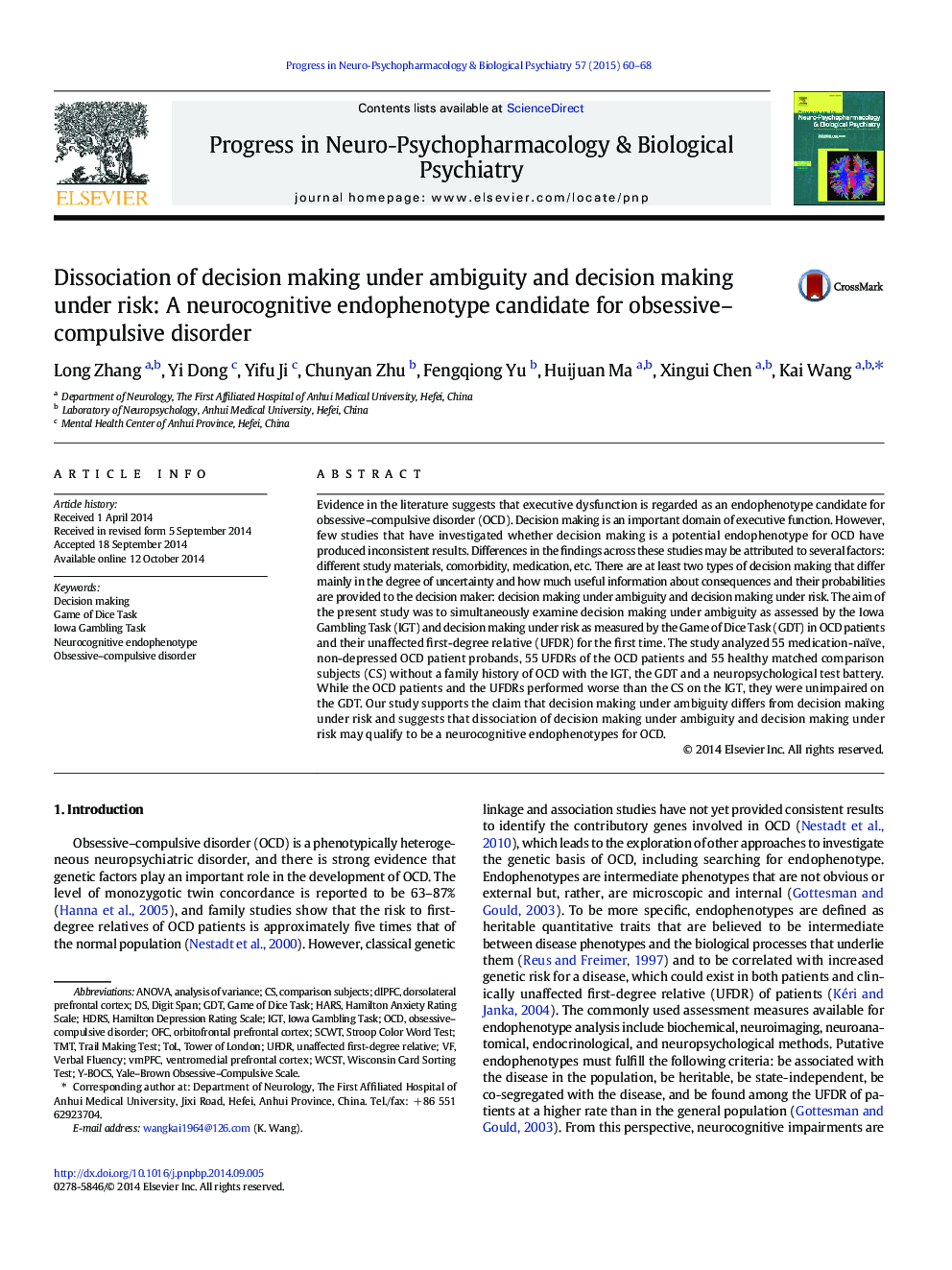| Article ID | Journal | Published Year | Pages | File Type |
|---|---|---|---|---|
| 2564771 | Progress in Neuro-Psychopharmacology and Biological Psychiatry | 2015 | 9 Pages |
•There are two types of decision making: decision making under ambiguity and decision making under risk.•The OCD patients, the UFDR and the CS were assessed by IGT and GDT to assess decision making under ambiguity and under risk.•The OCD patients and the UFDR performed worse than the CS on the IGT, but performed adequately on the GDT.•Dissociation of decision making under ambiguity and under risk may represent a neurocognitive endophenotype for OCD.
Evidence in the literature suggests that executive dysfunction is regarded as an endophenotype candidate for obsessive–compulsive disorder (OCD). Decision making is an important domain of executive function. However, few studies that have investigated whether decision making is a potential endophenotype for OCD have produced inconsistent results. Differences in the findings across these studies may be attributed to several factors: different study materials, comorbidity, medication, etc. There are at least two types of decision making that differ mainly in the degree of uncertainty and how much useful information about consequences and their probabilities are provided to the decision maker: decision making under ambiguity and decision making under risk. The aim of the present study was to simultaneously examine decision making under ambiguity as assessed by the Iowa Gambling Task (IGT) and decision making under risk as measured by the Game of Dice Task (GDT) in OCD patients and their unaffected first-degree relative (UFDR) for the first time. The study analyzed 55 medication-naïve, non-depressed OCD patient probands, 55 UFDRs of the OCD patients and 55 healthy matched comparison subjects (CS) without a family history of OCD with the IGT, the GDT and a neuropsychological test battery. While the OCD patients and the UFDRs performed worse than the CS on the IGT, they were unimpaired on the GDT. Our study supports the claim that decision making under ambiguity differs from decision making under risk and suggests that dissociation of decision making under ambiguity and decision making under risk may qualify to be a neurocognitive endophenotypes for OCD.
